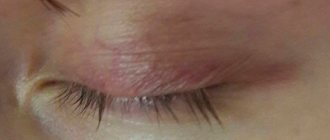Medical information is reliable Checked by Shaidullin Renat Flyurovich
Schizophrenia is a mental disorder characterized by disturbances in the emotional-volitional sphere and pathology of thought processes. Officially included in the international classification of diseases ICD-10 under the label F-20. It affects people regardless of age, gender and social status. In men it appears at an earlier age (18-25 years), while in women it first develops between 26 and 45 years.
During periods of exacerbation, a sick person must be under the supervision of a specialist. In this case, he will be provided with assistance to overcome the crisis in the most delicate manner. We provide anonymous support and keep the information of the patient and his relatives confidential.
Symptoms of a mental disorder
The World Health Organization divides the symptoms of mental disorders in humans into 4 main groups:
- Sensory-perceptual symptoms in which a person has a distortion of reality and can hear, feel or see things that others cannot sense.
- A common neurological symptom is cognitive impairment. The patient is increasingly experiencing a disorder of clear speech, memory lapses occur, and pathological beliefs about an event are established.
- Symptoms of a behavioral nature, when the patient may show unreasonable aggression towards relatives or stop performing daily functions.
- Emotional disorders most often occur as the main symptom; the patient may constantly feel a feeling of fear or sadness.
What to do if your loved one is mentally ill?
You need to prepare for the fact that your life can change greatly and learn how to behave correctly. A mentally ill person often becomes the center of attention for the entire family. Personal interests of household members fade into the background. We have to put up with the patient’s inappropriate behavior. You also need to prepare for the fact that the treatment may not work immediately. Sometimes the drugs prescribed initially do not help, and new ones have to be selected.
Yes, if a person has a mental illness, his relatives have a hard time. Some tips will help you withstand these stresses and maintain your own health:
- Control your emotions. Don't take what the patient says and does personally. Remember: he has no control over himself.
- Take breaks and find time to rest. You need to take turns sitting with the patient. If you don't have relatives who can help, hire a caregiver and have them come at least sometimes.
- If you feel emotionally damaged, see a psychologist or therapist. Don't wait for the problem to get worse.
- You must eat well and get enough sleep. Otherwise, you will not be able to cope with the load.
If you notice the symptoms described in this article in a loved one and think that they may be mentally ill, contact the specialists at the Cordia Clinic for help. Our experienced doctors will definitely try to help.
Signs of a mental disorder
Every second person with a mental disorder, starting from the early stages of the disease, experiences characteristic symptoms. They can appear with different intensities and frequency, but they are easy to notice with constant observation of a person. If one of the signs appears, you cannot leave it unnoticed and you should seek professional help.
Signs of a mental disorder most often go beyond certain cultural norms or beliefs in modern society. It is customary to identify the main signs of the course of the disease, which are most common among people with this diagnosis - memory impairment and sound thinking, sudden changes in a person’s behavior and mood for no known reason.
Signs of a depressive phase
Bipolar disorder begins in most patients without noticeable bright manifestations.
In a typical case of MDP, there are subtle fluctuations in the background mood with cycles of several days or weeks. Researchers of the problem emphasize that the unfavorable course of bipolar disorder is the onset of the disorder from the first depressive episode. During the depressive phase, 89% of suicides or suicide attempts occur. Depression occurs when high productivity of mental processes is abruptly replaced by its decline. Specific manifestations of the phase:
- severely depressed mood;
- slowing down the thought process;
- slower speech motor activity;
- decreased or complete absence of appetite, perverted taste sensitivity;
- weight loss;
- prostration;
- in women - problems with menstruation;
- mothers have problems with maternal instinct;
- lack of sexual desires;
- melancholy, which is felt physically as heaviness in the chest area;
- attacks of tachycardia, constipation, mydriasis (dilated pupils of the eyes);
- self-flagellation, guilt;
- increased anxiety;
- cognitive impairment.
Depression sometimes takes on an endogenous form - due to the biological nature of the disorder, not only mental, but also somatic and endocrine disorders occur.
Sometimes an “atypical” course of depression develops—increased appetite, hypersomnia. There is also a hypochondriacal type of disorder - in this case, obsessive hypochondriacal beliefs with an affective overtone are noted. With the delusional type of progression, “Cotard's syndrome” is present - in addition to anxiety, delusional beliefs of a fantastic nature are observed. With agitation depression there is noticeable nervous overexcitation. With the asthenic variant, the patient experiences a loss of the ability to feel anything.
Patients experience unmotivated sadness and a feeling of hopelessness especially acutely - from several hours to several days without the ability to be distracted by anything else. The person withdraws into himself and stops contacting family members and friends. Interest in those activities and things that previously had interests is completely lost. Low ability to learn new things. Appetite may be uncontrollable or absent.
Fatigue and lack of energy are felt around the clock. Sleep is interrupted, and episodes of awakening occur frequently, especially in the early morning. After sleep, a person does not feel rested. Memory problems arise and concentration is poor. Thoughts about suicide appear - a person experiences a clear conviction that life has no meaning and will never bring pleasure. With parasuicidal behavior, a syndrome of “tunnel thinking” is observed.
The depressive phase is very dangerous due to the high level of suicidal tendencies, parasuicides, and auto-aggressive acts. It is recommended to hospitalize the person for subsequent treatment in a hospital setting. 24-hour monitoring of the patient’s condition and indicators is important.
Causes of mental disorders
Scientists have found that the reasons for changes in a person’s mental state can be external factors such as psychological or social. Biological factors include a genetic predisposition to constant depression or nervous breakdowns, especially if, while a person was growing up, there were complex relationships between parents that left a certain imprint on the child’s psyche.
The results of many years of research have shown that the causes of mental disorders most often come from the patient’s unfavorable childhood. Drugs and alcoholism, temporary restriction of a person’s freedom in a confined space, frequent depression, difficult life situations and incidents can also lead to the development of the disease.
Types of mental disorders
Currently, the most common diseases include some types of human mental disorders. These data can always be tracked in the reports of the World Health Organization, where schizophrenia is among the top five most common diseases among the entire world population. It can originate during early human development, but in the transition period its signs will begin to increase.
In second place in popularity are types of disorders associated with the abolition of dependence on psychotropic or narcotic substances, including alcohol. Depression, as a type of mental disorder, occurs in every fifth inhabitant of the planet and is accompanied by pessimistic views of life and an apathetic mood.
Psychological mental disorders
According to the International Classification of Diseases, psychological mental disorders belong to groups F10 – F19 and are associated with human behavior disorder due to excessive use of psychoactive substances.
Most often, this type of disorder occurs against the background of addiction to a certain type of psychotropic drug. A person is convinced on a subconscious level that it is psychotropic substances that give him a dose of pleasure and without them he cannot exist normally. Over time, addiction occurs, which cannot be eliminated without professional help and treatment.
Why do men get sick more often?
Statistics have given a verdict: the stronger sex suffers from schizophrenic disorder more often than the weaker. The fact of primacy is associated with various factors: high hopes are placed on the stronger sex, more claims are made against it, and many expectations are associated with it.
A man in the eyes of society is a protector, a provider, a support. If the stronger sex is the head of the family, the responsibility for providing for the family falls on his shoulders. The modern world poses the financial question quite harshly. To earn money, a representative of the strong half of humanity has to work hard. Physical and mental stress is classified as chronic stress, which is an important factor in provoking the disease.
Fun fact: bachelors are 4 times more likely to suffer from the disorder than married people.
Another reason for the prevalence of the disease among the male population of the planet is considered to be physical injuries, in particular to the head. Its representatives are fond of traumatic sports: boxing, karate. Women drive cars more intensively, becoming involved in accidents. They serve in the army and take part in hostilities. Banal yard fights are more common among boys. All this becomes an excellent breeding ground for brain damage. And then - depending on your luck.
Among men, alcohol abuse is more common; drugs poison the brain, causing severe intoxication.
Patients are able to put forward their theories and ways to resolve the disease.
A schizophrenic man claims: one of the provoking factors of the disease is pride. From childhood, the guy was proud, and also a braggart. He did not recognize God, and when he began to come to the atheist in visions and call him to himself, he fell into magic. He imagined himself to be the messiah, the savior of humanity. After treatment there was relief. I started going to church and reading the Bible.
An interesting theory about genius personalities. In literature you can often find the statement of the legendary psychiatrist Cesare Lombroso: genius and madness go hand in hand. Or the words of the great Aristotle that genius inevitably presupposes madness. And indeed: among the male population there are much more hidden geniuses than among the female population, which explains the higher frequency of male schizophrenia.
Organic mental disorder
Organic and symptomatic disorders manifest themselves in patients at the cerebral level; they can manifest themselves against the background of brain injuries, after a severe stroke, or against the background of abuse of alcohol, narcotic and psychotropic substances.
Organic mental disorder can be diagnosed based on two main characteristics. The first include cognitive dysfunction, when a person has problems with memory or habitual learning. Impairments may be associated with loss of alertness, concentration and awareness. The second group includes vivid manifestations of hallucinations, anxiety and depression, as well as disturbances in emotional behavior.
Symptoms and signs
At the initial stage, schizophrenia is often clinically similar to psychosis and anxiety disorders.
Therefore, when making a diagnosis, the pathogenesis and symptoms are carefully studied. Social and behavioral disorders appear as mental illness progresses. A woman from the outside may seem too conflicted, or, conversely, withdrawn. Gradually there is a distance from the family, and a severance of all social contacts.
Psychiatrists have combined the signs of schizophrenia into separate symptom complexes:
- Productive – delusions and hallucinatory symptoms are present;
- Negative – depression, apathy, lack of will;
- Impaired mental performance - decreased attention and perception, disorder of thought processes.
If there are productive symptoms, a woman becomes dangerous not only to herself, but also to others. Delusional symptoms often lead to suicide or severe injury to a person who happens to be nearby.
Schizophrenia is characterized by mannerisms in gestures and facial expressions. Postures become unnatural (frozen posture, lack of plasticity). But there are cases when, on the contrary, hypermotor agitation is noted.
Schizophrenia has similar symptoms to many mental disorders. Therefore, a single clinical symptom does not indicate schizophrenia.
The symptom complex in schizophrenia lasts at least a month. But all the signs appear against the backdrop of a deterioration in overall functionality in various areas of life, which lasts for six months.
Schizophrenia is a slowly progressive mental illness. Therefore, symptoms increase gradually. Each stage of the disease has its own characteristic signs. But there is a so-called prodrome of the disease, which lasts 2.5 years before the appearance of clear clinical signs. The woman becomes withdrawn, gradually moving away from family and friends. Emotional coldness and mood swings appear.
| Disease stage | Clinical picture |
| I – mental destabilization | Weak manifestations – obsessions, behavioral disorders, emotional coldness, panic attacks, “unhealthy” desire for cleanliness and order. Symptoms begin to increase as the disease progresses. Various hallucinations are added - auditory, visual, olfactory, tactile. Over time, a woman becomes socially maladapted. Primary signs are quite specific and do not always manifest themselves in a clear clinical picture. The intensity of symptoms also depends on the form of schizophrenia and the rate of progression of the pathology. |
| II – somatoform disorders | Hallucinatory symptoms increase. Against the background of a visual illusion of perception, tactile sensations appear. That is, the patient “obviously” feels her hallucination - insects crawling under the skin or in the internal organs, a feeling of rotting organs. Any information received is associated with some past event in life - each time a new cycle of hallucinations is formed. With sluggish schizophrenia, the patient’s behavior is difficult to predict. Mostly complaints about “terrible” appearance. With a mild form of the disease, patients are completely “disconnected” from reality. They have their own fictional world in which they feel comfortable being. There are catatonic symptoms and a desire to imitate. |
| III – productive symptoms | The woman becomes aggressive. Outbursts of rage arise from any irritant or against the background of hallucinosis. Hallucinations provoke delusional symptoms. Patients claim that they perform all actions according to orders - a voice in their head. It is impossible to predict behavior because “voices” begin to control a person. Such patients become socially dangerous. |
Without timely treatment, schizophrenia inevitably leads to irreversible changes in personality.
Many scientists are inclined to believe that the manifestation of the disease begins in adolescence. But the latent period of the disease can last for many years. Active symptoms may appear in women during the postpartum period. The body and central nervous system are under severe stress. Even for mentally healthy women, childbirth and motherhood are stressful. Therefore, if the psyche cannot cope with the load, then no woman can be immune from the development of schizophrenia.
Mood swings and behavioral disorders occur in women even during the period of declining sexual function. Menopausal syndrome provokes neurovegetative, psychoemotional and metabolic changes. According to WHO, the number of patients who develop mental disorders due to estrogen deficiency increases every year.
But there are also factors that can trigger schizophrenia even in old age. These factors were designated as psychosocial. Internal and external changes in a woman (aging) require the body to activate adaptation mechanisms. But this doesn't always happen.
Late manifestation of the disease (55–60 years) has an atypical course. Therefore, it is more often called paraphrenia. In this case, hallucinatory-delusional psychoses do not have a pronounced destructive effect on the personality. Paraphrenia has its own ICD code. It is considered as a separate diagnostic category.
Scientists have come to the conclusion that the manifestation of the disease at a later age (after 45 years) is more common in women who are prosperous and have realized themselves in all areas of life. They had negative symptoms, but disorganization was only slightly expressed. Paranoia and hallucinatory symptoms are pronounced.
Age gradation was applied to schizophrenia. Thus, it was divided into subtypes, but only for convenience. Because the clinical features are not different.
Subtypes:
- Late-onset disease – from 40 to 60 years;
- A very late-onset disease - from 60 years of age (schizophrenia-like psychoses).
Late schizophrenia also occurs in various forms and has a different prognosis for life.
Acute mental disorders
Transient and acute psychotic personality disorders are characterized by the most rapid development of diseases. The condition of a sick person can deteriorate significantly in just a few days, with several main signs observed - depression and passive mood, accompanied by intense hallucinations, states of seizures and delirium.
Acute mental disorders are conventionally divided into two categories - polymorphic state and schizophrenia. The latter occurs most often, the true causes of which have not yet been established. The risk group may include people who have been subjected to severe violence (not necessarily of an intimate nature), as well as those who have experienced severe emotional stress.
Levels of mental impairment
When diagnosing mental health diseases, doctors identify levels of mental disorder, depending on which decisions are made on further treatment and stabilization.
The first level is neurotic, which represents the appearance of various phobias, fears and neuroses, which can be caused by illness or some external factors. Divided into several types:
- neurasthenia (this implies nervous exhaustion of the body, weakness, apathy and irritability);
- obsessive-compulsive disorder (accompanied by an obsessive state when a person thinks that he hears or sees something that is not actually there);
- hysterical neurosis (refers to conditionally desirable types of disorder and begins when a person may benefit from it, although he himself may not be aware of such a reaction of the body).
The first level of violations is characterized by the beginning and end of the process in approximately limited periods. Such disorders most often affect people who have such a predisposition. However, various mental traumas can also trigger neurosis.
The second level is called psychopathic and is a reflection of all human personality disorders. These are certain nuances in behavior, as well as character traits that are present with a person throughout his life.
And the last level of disorders is psychosis (psychotic). This stage of the disease is accompanied by the appearance of hallucinations and delusions. Various manias, catatonia and mental confusion may also occur.
Chronic mental disorder
In medicine, chronic disorders are usually understood as a condition of a sick person when it occurs over a long period of time and with characteristic attacks. Types of such disorders include paranoia, epilepsy, manic or depressive psychosis.
Chronic mental disorder, like most diseases of this type, is characterized by periods of improvement and sharp deterioration in a person’s condition. Even after all signs of the disease have been suppressed, the patient is left with a persistent mental defect that is difficult to treat.
Paranoid schizophrenia
This type of schizophrenia is characterized by distortions in thinking and perception. A striking feature, which is the basis for diagnosis, is the presence of delusions and hallucinations. The behavior of patients changes dramatically, they become suspicious, suspicious, aggressive and are constantly in a frightened state.
They are practically “switched off” from their usual life, stop taking care of themselves and performing any household duties. Lack of care from loved ones makes the situation worse. Treatment is long-term, and the prognosis for recovery in this form of schizophrenia is unpredictable. Patients with paranoid schizophrenia believe that they can transmit thoughts at a distance and hear voices. They believe that someone is trying to control them and force them to do different things, filling their minds with evil, pessimism and fear.
Symptoms of paranoid schizophrenia:
- real memories are joined by fictitious ones, a person receives a distorted picture of the past;
- appear beyond the idea;
- habitual behavior changes, it is far from the concept of adequacy;
- there are often nervous breakdowns and hysterics;
- patients are confident that they have a special mission, highly developed insight, intuition;
- are often in a state of anger, embitterment and gloom;
- meaningless thoughts begin the moment others ask them simple questions.
There are two forms of paranoid schizophrenia.
- Hallucinogenic.
Delusional disorder occurs chaotically and after some time disappears without a trace. Patients consider this state as an insight that helps them see their true purpose. This form of the disorder is easier to treat, the symptoms are completely controlled by medications. You can undergo a full course of therapy at Dr. Isaev’s Clinic.
- Delusional.
Fictional ideas of a fantastic nature arise spontaneously, the patient is often under their influence. This is a negative attitude towards loved ones, suspicion, mania of persecution, jealousy. This form takes on a continuous course; periods of remission are usually absent, which complicates the treatment process.
Temporary mental disorder
Unlike a chronic disorder, a temporary one involves understanding such conditions of a sick person in which short-term mental abnormalities are observed, ultimately amenable to complete recovery.
A temporary mental disorder can manifest itself in a person in the form of delirium tremens. This pathological condition is most often caused by prolonged alcohol consumption. Temporary disorders also include severe mental states, experiences and nervous conditions caused by external environmental factors.
Asthenic personality disorder
The main symptoms of this form of the disease include:
- rapid exhaustion;
- weakness;
- irritability;
- shyness and timidity;
- apathy;
- general depressed state.
Men suffering from this type of psychopathy are characterized by impressionability and a tendency to introspection. Characteristic is a feeling of one’s own inferiority, insolvency; the future is always seen in a pessimistic light. They do not believe in their strength, are afraid of any difficulties and make every effort to avoid them.
As a rule, they take a passive position, are entirely dependent on the opinions of others, endure all insults without complaint, and unquestioningly carry out instructions. A tendency toward hypochondria is noted; the patient listens to all internal sensations. And even a slight deviation from the norm is perceived as a severe pathology.
Treatment of mental disorders
To treat a mental disorder or reduce a person’s suffering during an exacerbation of the disease in modern medicine, there are effective methods that can be practically successfully used only with professional supervision or while in an inpatient hospital.
Treatment of mental disorders should only take place in combination with the use of psychotropic medications and professional psychotherapy. For patients, the use of pills alone is not enough; it is important to regularly conduct conversations or exercises to get rid of the symptoms and causes of a serious mental illness.
Treatment of mental disorders in men
Among men, acute and organic types of mental disorders are most common, which require a more serious and long-term approach to treatment. Psychosis, schizophrenia, addiction to illegal drugs and manic episodes – these diseases affect more than 40% of the male population. According to WHO statistics, men are much less likely to admit that they have mental disorders than women.
Treatment of mental disorders in men occurs under constant supervision by a professional psychotherapist. The most effective treatment is achieved only if it is comprehensive, that is, a combination of medications with techniques and exercises that are based on a direct conversation between the patient and the doctor.
Hysterical psychopathy
In men, the pathology is extremely rare. With this disorder, all emotions and feelings are exaggerated. Characteristic:
- demonstrative behavior;
- theatricality of facial expressions and gestures;
- emotional lability;
- infantilism.
All actions are dictated not by the desire to achieve a certain goal, but by the desire to impress others. Such men are very amorous, but at the same time they quickly become disappointed in their feelings and often change partners. They cannot find a permanent, well-paid job and are irresponsible. Under the influence of any external reasons, hysterical attacks are possible, accompanied by uncontrollable aggression, anger, and rage.
Treatment of mental disorders in women
Most often, women experience mental disorders associated with depression or constant anxiety. These species are the most resistant to drug treatment. Any treatment is based only on an individual approach, based on the woman’s condition, her age and previous injuries to the disease.
Treatment of mental disorders in women is based on a specific scheme, which includes the use of antidepressants, a combination of other pharmacological agents and mandatory psychotherapeutic techniques.
Differences between males and females
If you believe the statistics, men get sick less often than women. Ratio: 3:2. The female part of the patients is characterized by a rapidly cyclical nature of the disorder. Women have low sensitivity to therapeutic methods. They have a higher risk of suicidal behavior and a higher rate of hospitalization. The symptoms of bipolar disorder in men are practically no different from the manifestations of the disorder in women.
Minor differences - in the male part of the patients the phases of mania and hypomania predominate, and in the female part - depressive states. Symptoms of depression in women are much more pronounced.
Mental disorders in adolescents
One in six people affected by a mental disorder are in the 10-19 age group, one of the most difficult transition periods of adulthood. The main reason for the mental disorder of a teenager is the process of personality formation, which can be negatively influenced by the people around him, as well as a manic desire to try prohibitive drugs for the first time in his life.
Mental disorders in adolescents can only be treated in a comprehensive manner by professionals together with parents. During this period, it is important to create a safe atmosphere for the life of a teenager, to protect him from possible risks and negative factors from others.
Mental disorders in children
Mental disorders in children under 10 years of age may be indicated by symptoms such as impaired attention and hyperreactivity, which manifests itself in the form of extreme mobility or fussiness. Starting from the very birth of a child, it is very important not to miss the moment of the onset of pathological deviations in his behavior.
The doctor is faced with the task of promptly and correctly dividing mental disorders due to improper pedagogical upbringing of parents or genetic predisposition. The initial signs of the disease in children include decreased appetite, which occurs repeatedly in the form of vomiting or complete refusal to eat.
Diagnostics
Diagnosis is carried out by psychiatrists. This is an important step before treating the disorder, since the symptoms of many mental disorders are similar to each other. To exclude or confirm organic lesions, MRI of the head, radiography, and electroencephalography are prescribed. The diagnosis is made according to the criteria of the ICD disorder according to the categorical division of symptoms.
An episode of a mood disorder is considered to be a condition in which the mood disorder is expressed to a certain degree and for a certain time: depression - 2 weeks; mania – 1 week. According to researchers FK Goodwin, KR Jamison (in 1990), 65-70% of initially established psychiatric diagnoses are erroneous - other diseases are easily confused with bipolar disorder. The consequence is the prescription of incorrect drug treatment, aggravation of the course of MDP.
The diagnosis of manic stage is established if the person being examined has at least three of the following symptoms:
- delusions of grandeur;
- excessively low need for sleep;
- previously unusual incoherence of speech;
- uncontrolled flow of ideas;
- previously unusual distractibility;
- psychomotor stimulation;
- interest in activities with increased risk to life or health;
- problems in labor, educational, social functioning of the individual.
The psychiatrist determines the severity of the disorder: mild, moderate or severe with psychotic symptoms. According to research by authors RM Hirschfield et al., (2003), G. Perugi (2010), affective disorder is more often confused with depression (60%), anxiety disorder (26%), schizophrenia (18%), personality disorders (17%) , addiction to psychoactive substances (14%).
To establish the correct diagnosis, pay attention to the following points:
- with bipolar disorder, there is an unstable mental response to treatment with antidepressant drugs;
- in case of bipolar disorder, depression and anxiety are initially not combined with the use of psychoactive substances;
- psychotic symptoms develop at a previously normal level of social adaptation;
- family history is likely to include mood disorders or other mental pathologies.
The complexity of diagnosis is based on the fact that the symptom complex of bipolar disorder in its depressive phase is in many ways similar to clinical depression. Differences between bipolar depression and its other types: appetite disorder of the hyperphagia type, the presence of hypersomnia, mild psychotic manifestations. Bipolar disorder is also differentiated from classical depression by the fact that manifestations are noticeable in childhood and develop faster.










